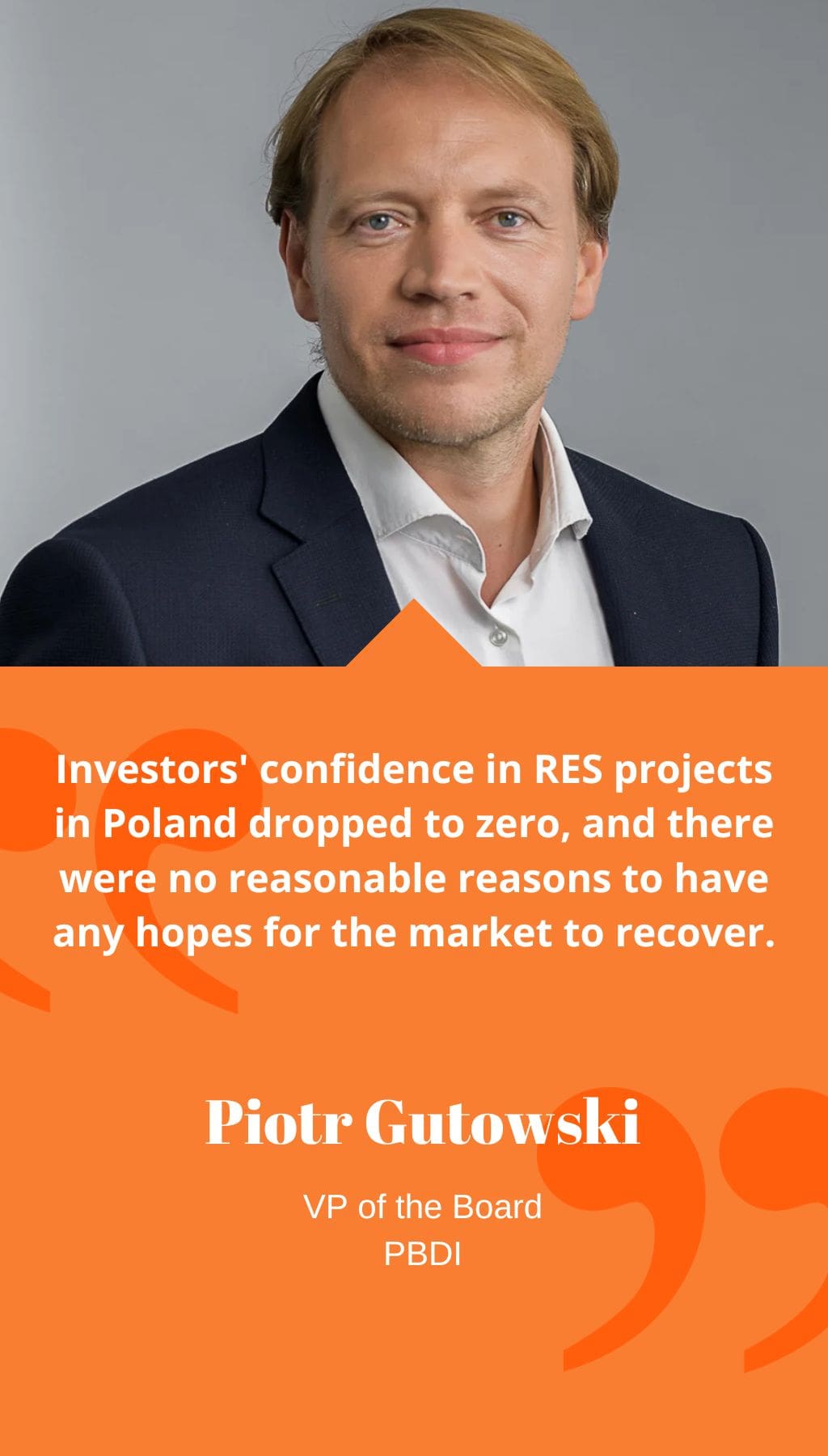
- Poland | 25 May 2019

Can you provide an overview of the history of the renewable energy sector in Poland?
Yes, certainly. Our involvement in the RES sector began in 2007 with our first contract for the construction of wind turbine foundations. Over time, we developed our competences and were able to construct entire wind farms. In 2015, we achieved record revenues from wind farm construction due to the government’s announcement to put an end to the support scheme based on green certificates. During this period, investors aimed to commission their projects before the end of 2015, and we were simultaneously building 11 wind farms.
However, the thriving segment disappeared overnight due to the lack of support with green certificates, unfavorable interpretations regarding property tax, grid operators terminating long-term power purchase contracts with investors, and the adoption of the Distance Act, which brought the development of new wind projects to a halt. Investors’ confidence in RES projects in Poland dropped to zero, and there were no reasonable reasons to have any hopes for the market to recover.
How did you manage to survive the investment gap after the abolition of the green certificate-based support scheme?
We continued to be active in our traditional road construction market segment and looked for orders in other sectors, including agriculture, where we were building infrastructure for agri-food processing, such as silo foundations. We were also able to rely on Erbud Group’s orders, participating as a sub-contractor at Erbud’s construction sites, carrying out earth and road works.
When did prospects for new orders in the RES segment reappear?
At some point, it became obvious that Poland might not be able to meet the 15% target for renewable energy sources in 2020, which was the core reason why the auction scheme was introduced. The recent auctions have shown that wind energy is cheaper than traditional fuels, and solar has kicked off in a massive way – with both segments running, the grid is nicely balanced, which was never the case in the past. These changes made our officials realize there is no other way forward.
Were developers pressured to bid lower prices during auctions just to get their projects across or extend their connection agreements?
I do not believe they were underbidding because developers in Poland are very cautious due to having to pay PLN 30,000 for every MW to participate in the auction. If they do not complete the project, they lose the money. The market has matured, and inevitably when this happens, prices go down, everybody becomes familiar with risks, and can calculate costs better.
Has the decrease in the price of wind energy put pressure on the supply chain to lower their costs in Poland?
There is some pressure for wind turbine suppliers and BOP contractors like us. The highest 20% of bids are automatically cut off in the auction mechanism, so if you want to win, chances are you will lower the price. This leads to everybody trying to have super economic projects and cut CAPEX – solutions that work but are also cheap. However, this has not affected us greatly because we are in contact with investors before the auction, and they are well aware of construction costs, and the prices they put forward reflect them.
Are you concerned that history might repeat itself with the renewable energy sector in Poland?
I am convinced, to some degree, that it will because it is simply how things go in renewable energy. Even in Germany, a country that is very stable compared to others, the market stopped at some point. I see the current situation as a window of opportunity, and the plan to make the best out of it is to have an open approach towards customers. When we start a project, we are in the same boat: they want to generate power as soon as possible, and we want to finish construction and move on, rather than create additional costs.














